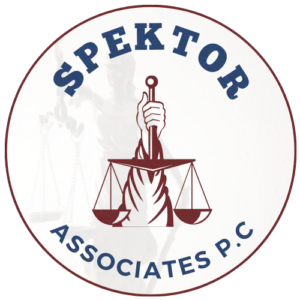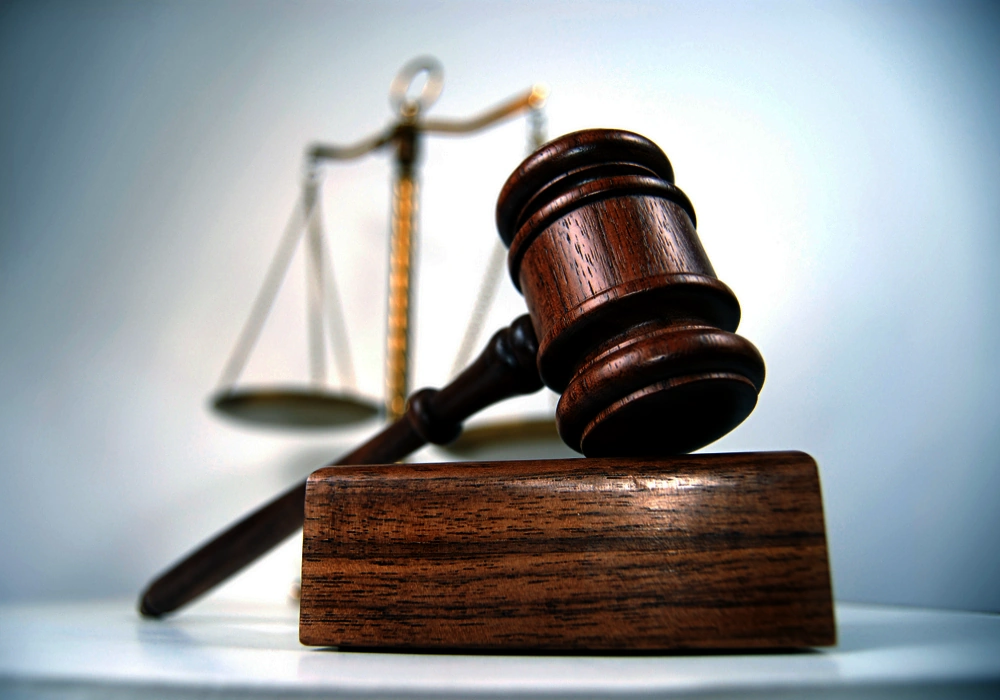New York State is well-known for its talented and diverse professionals, but the consequences of unfortunate workplace accidents, injuries, or illnesses can be far-reaching.
The Workers’ Compensation Board (WCB) is dedicated to providing benefits in the event of a work-related incident to ensure that workers are protected from such risks.
This article will explain in detail how the WCB works, from the types of accidents and illnesses that could be experienced on the job to who has responsibility for covering damages and other relevant information.
New York Work Accidents, Injuries, and Illnesses Statistics
Workplace accidents, injuries, and illnesses are disturbingly commonplace in New York, with a shocking number of cases reported annually.
According to the latest figures from the Bureau of Labor Statistics, an immense 125,500 nonfatal workplace injuries and illnesses were reported in 2021 from the private sector alone, with strains, sprains, cuts, and bruises recurring as the most commonly reported incidents.
Types of Work-Related Accidents, Injuries, and Illnesses
Workplace accidents, injuries, and illnesses can have minor to major ramifications that extend far beyond the point of injury. The following are examples of common workplace mishaps that New Yorkers may encounter:
Strains and Sprains
Work-related strains and sprains are all too common. They’re caused by the excessive force of one’s motions when lifting heavy items or due to repetitive tasks. The warning signs are unmistakable: pain, swelling, and stiffness can make it hard to move the injured muscle or ligament.
Cuts and Bruises
Cuts and bruises are among the most common injuries in the workplace. These injuries happen when the skin ruptures or is damaged, causing bleeding and puffiness. Sharp objects, blunt force trauma, or contact with an abrasive surface can all cause such injuries. Tenderness, swelling, and blood seepage are some of the symptoms.
Fractures
Fractures are no laughing matter! Breaks in the bones can occur when the skeletal frame is subjected to heavy force or trauma, such as falls, blunt impact, or continuous stress. Symptoms include pain, swelling, and difficulty moving in the affected area. Immobilization is essential in the treatment of fractures, with the use of a cast or brace to keep it secure and physical therapy to aid in the healing process. Fractures can be healed with care.
Burns
Hot surfaces, dangerous chemicals, faulty electrical equipment, or radiation can all be major sources of painful burns. The signs are usually recognizable: redness, swelling, and blisters, as well as extreme pain. To prevent infection and facilitate healing, it’s important to remove the source of the burn, instantly cool the affected area, and seek out medical assistance.
Illnesses Caused by Exposure to Hazardous Materials
Employees who work with hazardous materials are at risk of becoming seriously ill. Exposure typically results in respiratory problems, skin rashes, and other health issues related to whatever substance is present. It’s critical to take the necessary precautions to avoid being exposed in the first place, such as locating and eliminating the source, as well as receiving the necessary medical care and health monitoring if you’ve already been exposed.
Stress and Anxiety Disorders
When faced with excessive tension, insecurity, or conflicts at work, employees are prone to developing stress and anxiety disorders. Numerous things, including strenuous workloads, unstable employment, and interpersonal conflicts with coworkers or superiors, can contribute to such disorders. To prevent and manage these causes, it is crucial to be aware of them.
Hearing and Vision Loss
Workplace-related hearing and vision impairments are caused by exposure to loud noises and hazardous materials. Such exposure could be caused by loud machinery, equipment, chemicals, or other potentially dangerous substances. Indicators of impairment may include difficulty hearing or seeing a ringing sensation in the ears, or blurred vision. To manage such conditions, it is important to reduce exposure to the hazard, use protective gear, and seek out medical advice as soon as possible in order to prevent further deterioration.
Back Injuries
Back injuries are a common occupational hazard that occurs when the spine or muscles are damaged as a result of excessive pressure or continuous strain. Lifting heavy objects, engaging in repetitive movements, or falling can all cause back pain. Sufferers may experience discomfort, tingling, numbness, and mobility issues. Treatment for this type of injury typically includes rest, physical therapy, and pain management to help relieve symptoms and promote recovery. In extreme cases, surgery may be required to correct the underlying problem.
Causes of Work-Related Accidents, Injuries, and Illnesses
Work-related accidents, injuries, and illnesses can occur due to a variety of reasons, including:
Slip and Fall Accidents
Slip and fall incidents are common workplace hazards that slippery floors, insufficient lighting, and cluttered workspaces can cause. Employers should take steps to ensure a safe working environment to help mitigate these risks. Businesses can reduce the likelihood of these accidents occurring by ensuring proper lighting, creating clear aisles and walkways, and maintaining potentially slippery surfaces on a regular basis.
Improper Use of Equipment
Accidents and injuries can occur in the workplace when machinery, tools, or equipment are used improperly. This might occur if people don’t get enough training, break safety rules, or put unintended items to use. Having employees who are not properly trained and informed about the components they are using can lead to disastrous results. Employers should also be watchful in providing the tools and training employees need to safely use any electronic device.
Lack of Training and Safety Measures
When companies fail to provide workers with appropriate safety instructions, enforce safety regulations, and supply necessary protective gear, they may be setting the stage for potentially dangerous occupational accidents. To safeguard employees, it is essential to ensure that proper training is provided, safety protocols are adhered to, and the necessary equipment is at the ready.
Exposure to Hazardous Materials
Workers can be exposed to a wide range of dangerous materials, such as smelly things, chemicals, and other harmful things. This exposure can happen if there isn’t enough airflow, the right safety gear isn’t available, or dangerous materials aren’t handled properly. Employers must take all the necessary steps to make sure their workers are safe when they are working with dangerous materials.
Physical and Emotional Stress
Workplace stress can have a negative impact on one’s psychological and physiological well-being. Prolonged working hours, high demands, and an inability to control one’s work environment can all lead to such outcomes. It is critical to be aware of the possibility of such harm so that precautions can be taken.
Unsafe Working Conditions
Unsafe working conditions can be hazardous to employees, resulting in potential harm or injuries. Poor maintenance, a lack of safety equipment, and a failure to follow safety regulations can all contribute to an unsanitary and dangerous workplace. Employers must take responsibility for creating a risk-free workplace environment for their employees’ health and safety.
Job Types Where Workers Are Likely to Get Injured
Some job types are more prone to work-related accidents, injuries, and illnesses than others. These include:
Construction and Manual Labor Jobs
Performing the duties of a construction worker or manual laborer is strenuous physically, requiring you to build, excavate, and lift heavy objects, among other things. Workers in this field are especially vulnerable to harm due to the demanding nature of their work and the use of heavy machinery and tools.
Jobs in the Healthcare Industry
Jobs in the healthcare industry include medical positions such as doctors, nurses, and technicians. Due to the physical demands of the job, such as lifting patients, as well as exposure to hazardous materials and infectious diseases, healthcare workers are at a high risk of injury.
Jobs in the Manufacturing Industry
Jobs in the manufacturing industry refer to positions in the production of goods and products, such as assembly line workers and machine operators. Workers in the manufacturing industry are at a high risk of injury due to the use of heavy machinery, repetitive motions, and exposure to hazardous materials.
Jobs in the Transportation Industry
Transportation jobs include those that involve moving people or goods from one location to another. Transportation workers are particularly vulnerable to injury due to the hazardous nature of their work, the long hours they put in, and the possibility of vehicular accidents.
Jobs that Require Repetitive Motions
Jobs requiring repetitive motions involve the repeated use of a particular body part, such as typing or assembly line work. Due to the strain and stress placed on the body by repetitive motions, there is a high risk of injury among workers whose jobs require repetitive motions.
A Workers Comp Lawyer Can Help
A workers’ compensation attorney can assist injured workers in navigating the workers’ compensation system and defending their rights. Here are some ways a workers’ compensation lawyer can assist you:
Filing a Claim
A workers’ compensation attorney can assist with filing a workers’ compensation claim, ensuring that all required paperwork is complete and submitted on time.
Representation in Hearings
If a claim is denied or disputed, a workers’ compensation lawyer can represent the injured worker in a workers’ compensation hearing, presenting evidence and advocating on their behalf.
Negotiating Settlements
If a settlement is proposed, a workers’ compensation attorney can examine it and negotiate on the injured worker’s behalf to make sure they get just compensation for their harm and losses.
Appeal Process
If a claim is denied or a settlement is deemed insufficient, an injured worker can be guided through the appeals process, with an attorney representing them in court and advocating for their rights.
Navigating Complex Laws
Workers’ compensation laws can be difficult to comprehend due to their complexity. A workers’ compensation attorney has the knowledge and experience necessary to interpret these laws and guide the injured employee through the process.
The Role of the Workers’ Compensation Board
A key factor in ensuring that employees who have experienced a work-related injury or illness receive the benefits to which they are legally entitled is the Workers’ Compensation Board (WCB). The WCB is in charge of managing the state’s workers’ compensation program, which includes taking claims, processing them, conducting investigations, and providing injured workers with medical care. Additionally, the WCB aids in the resolution of disputes between employers and employees and offers resources and information to both parties.
Frequently Asked Questions about the Workers’ Compensation Board
Do you have to have workers’ compensation insurance if you are an employer in New York?
Yes, almost all employers in New York are required to carry workers’ compensation insurance, with a few exceptions, such as self-employed individuals and partnerships.
When do you need to report a work-related injury or illness?
Employees must notify their employer of any workplace injury or illness within thirty days of it occurring.
If I am not a full-time employee, can I still receive workers’ compensation benefits?
Yes, even part-time workers may be eligible for workers’ compensation benefits if they were injured or became ill while on the job.
Will I get workers’ compensation benefits if I was under the influence of alcohol or drugs when the injury occurred?
No, an employee who is found to be under the influence of drugs or alcohol at the time of an injury or illness will not be granted workers’ compensation benefits.
What should I do if my employer denies my workers’ compensation claim?
An employee may appeal a company’s denial of their workers’ compensation claim to the New York Workers’ Compensation Board.
Conclusion
The New York Workers Compensation Board is critical to ensuring that workers who are injured or ill on the job receive the necessary benefits. Familiarizing oneself with the WCB and the workers’ compensation process allows employees to ensure that their rights are upheld in the event of a work-related injury or illness. As a result, it is critical for employees to understand the Workers’ Compensation Board and its procedures in order to make informed decisions in such cases.
If you were injured at work and have questions or need help navigating the NYS workers’ compensation system, call Gregory Spektor and Associates for a free consultation.


